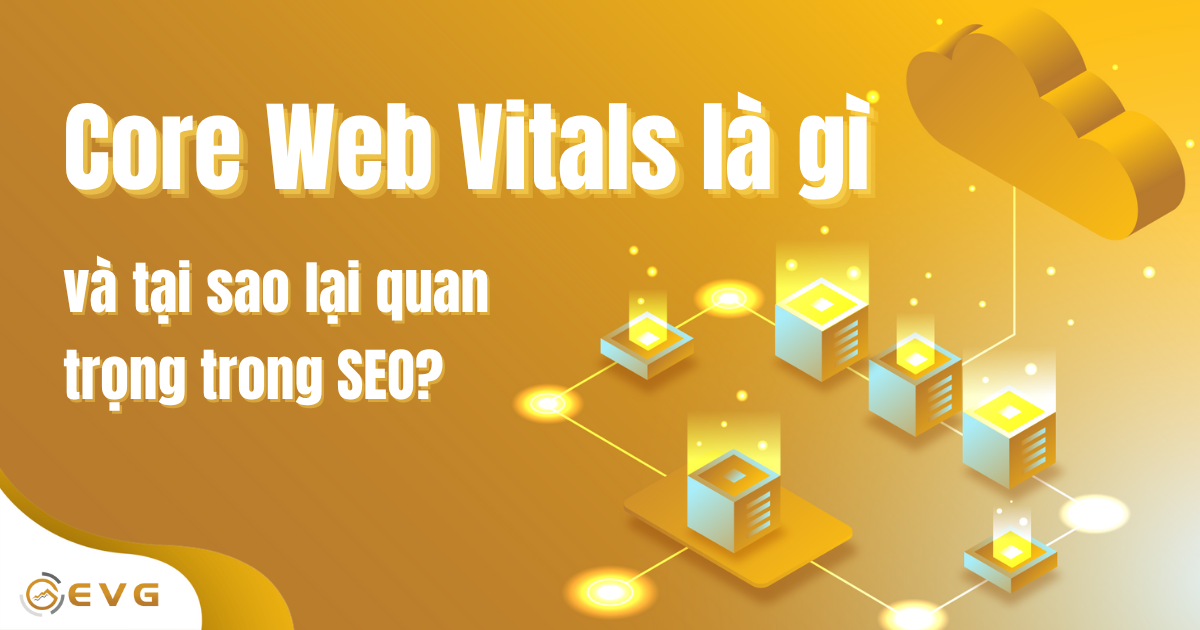
 19:05
31/05/2025
19:05
31/05/2025

In this context, a Content Delivery Network (CDN) is not just a tool for accelerating websites, but also a powerful solution to improve Core Web Vitals—ultimately boosting your website’s visibility on Google.

Core Web Vitals are a set of three key metrics developed by Google to measure user experience on a website:
LCP (Largest Contentful Paint) – Measures loading time of the largest visible content (e.g. hero images, headlines).
FID (First Input Delay) – Measures delay between user interaction (click, scroll, etc.) and browser response.
CLS (Cumulative Layout Shift) – Measures unexpected layout shifts while the page is loading.
Websites that perform well on Core Web Vitals provide smoother and more user-friendly experiences. As a result, Google favors these websites in search rankings. In today’s SEO landscape, Core Web Vitals have become a critical technical SEO standard.
)
A Content Delivery Network (CDN) is a system of distributed servers that:
Stores and delivers static assets such as images, CSS, JavaScript, and videos from edge nodes close to users.
Reduces load on the origin server, minimizes latency, and speeds up page load times.
Improves availability, security, and scalability—especially during marketing campaigns or traffic surges.
EVG CDN leverages powerful infrastructure in Vietnam and across Asia to help businesses deliver fast, reliable content to end users.

LCP is often slowed by large assets like banner images, hero sections, or custom fonts. With a CDN:
These assets are cached and delivered from the nearest edge node.
Faster asset delivery leads to LCP under 2.5 seconds—the benchmark Google considers “Good”.
FID is affected by:
Heavy JavaScript files delaying browser response.
Render-blocking resources preventing interaction.
A CDN compresses and optimizes JS files, delivers them quickly via edge nodes, and reduces initial load—leading to significant FID improvement.
CLS happens when slow-loading assets cause sudden content shifts. With CDN:
Images and videos load faster and at correct dimensions.
Fonts and CSS are preloaded effectively.
Smoother rendering prevents layout jumps.
→ This leads to a lower CLS score, creating a more visually stable experience.
A high-performance CDN like EVG features nodes in Hanoi, Ho Chi Minh City, Singapore, and more—ensuring response times under 50ms for users across Vietnam and Asia.
Modern compression algorithms like GZIP and Brotli, combined with HTTP/3 protocol, reduce file sizes and improve data transfer speed—all of which are integrated into EVG’s SEO-optimized CDN.
EVG CDN can automatically:
Convert images to WebP,
Resize images for each device,
Smart-cache resources for faster loading across both desktop and mobile.
Several EVG clients have reported measurable improvements after CDN integration:
LCP improved from 3.2s → 1.8s thanks to image caching at edge nodes.
FID dropped from 170ms → 45ms by using HTTP/3 and lazy-loaded JS.
CLS is reduced from 0.25 → 0.04 by preloading images and iframes correctly.
→ Their Core Web Vitals reached “Good” scores on Google PageSpeed Insights, leading to 15–20% keyword ranking increases within 2 months.
Use free tools such as:
PageSpeed Insights
Google Search Console (Page Experience tab)
Lighthouse via Chrome DevTools
EVG provides CDN integration in just 15 minutes, with step-by-step guides for:
WordPress
Magento
PHP frameworks
Custom CMS
Plus:
Free SSL, support for HTTP/2 & HTTP/3
User-friendly dashboard with real-time Core Web Vitals tracking
24/7 technical support for debugging and performance optimization
A CDN not only speeds up your website but also acts as a "golden key" to improving Core Web Vitals—an increasingly important ranking factor in Google’s algorithm. With EVG’s advanced CDN solution, businesses can enhance technical SEO, improve user experience, increase retention, and boost conversions.

 19:05
31/05/2025
19:05
31/05/2025

 19:05
31/05/2025
19:05
31/05/2025

 19:05
31/05/2025
19:05
31/05/2025